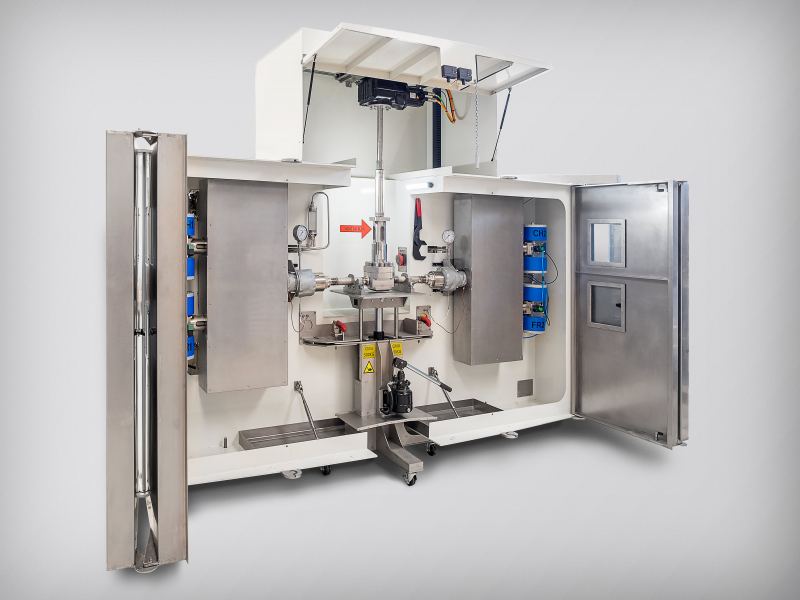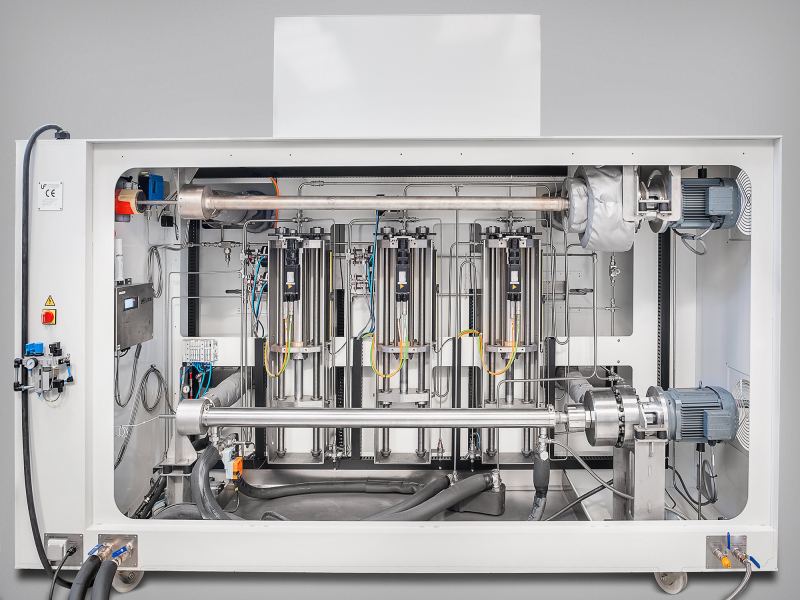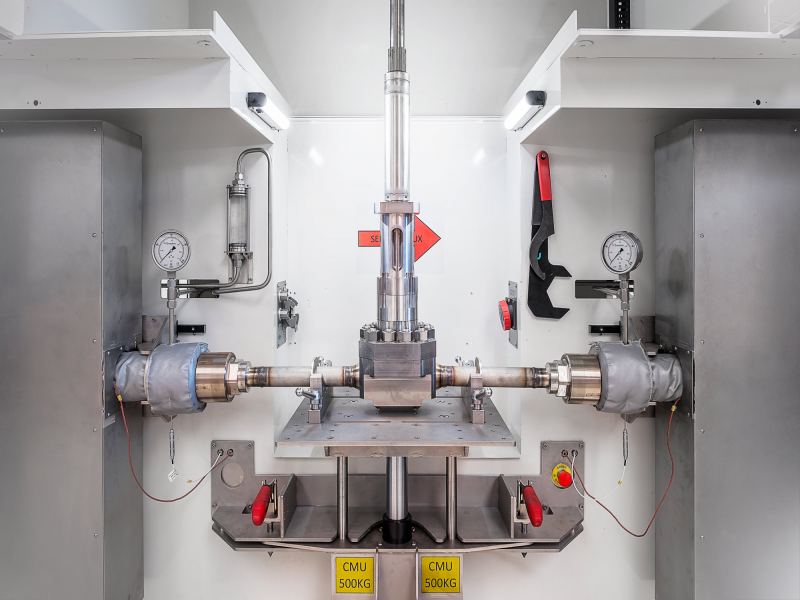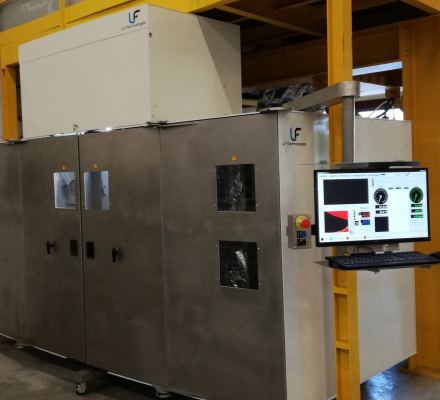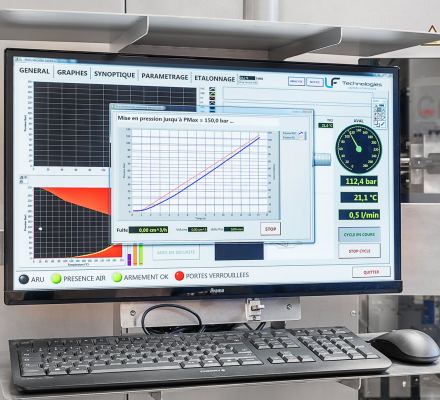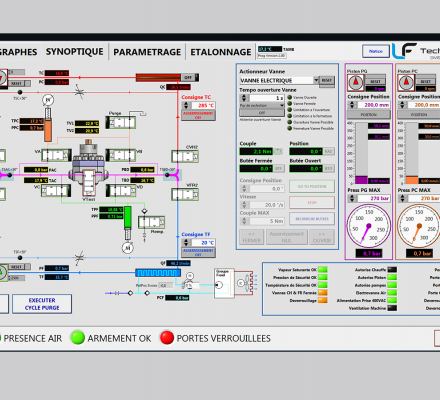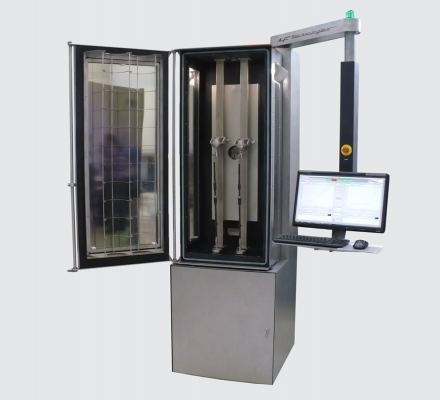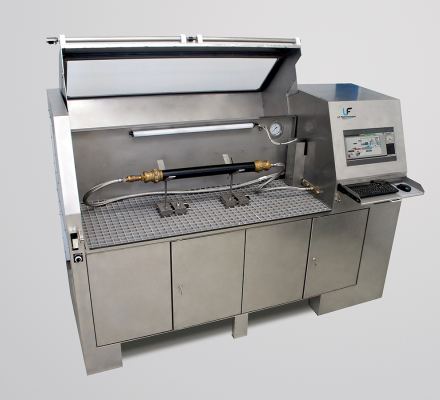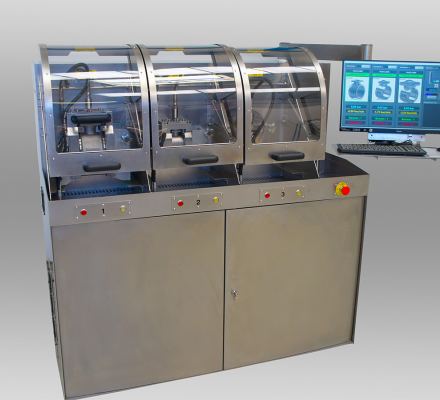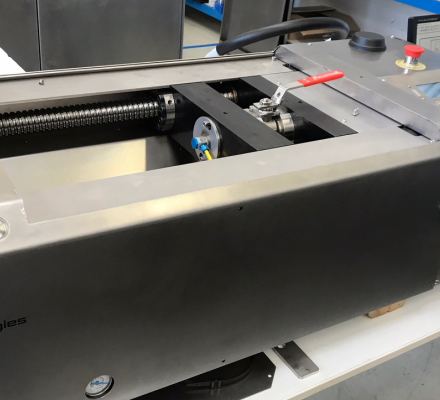Customer
Our client, a leading manufacturer of high-performance valves for the nuclear and energy industries, is seeking to carry out R&D and qualification tests on valves for high pressure and high temperature water circuits.
Tested product
High performance nuclear valve
Valves’ purpose is to regulate and control the flow of a fluid. Applied to the nuclear sector, they can adjust the load and low-pressure flash. Valves play an important role in the cooling circuit.
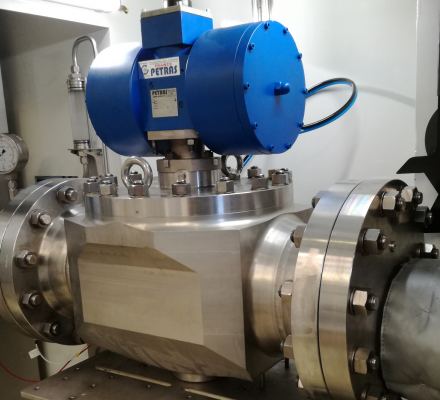
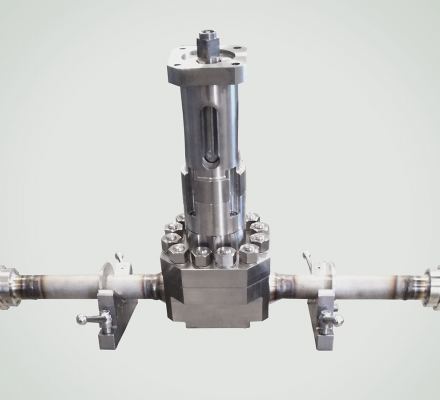
Objective
Creating a loop to test fittings pressure and temperature resistance.
The test loop shall simulate a circuit in which the water circulates at a high flow rate (300 l/min), under high static pressure (270 bar), with large and rapid temperature variations (from 20°C to 285°C).
The system shall be capable of controlling the actuation of the automatic valves (electrically or pneumatically operated) or of operating the manual valves with controlled and measured torque.
The bench must be suitable for a wide range of valve sizes and allow easy mounting of the valves on the system.
User safety is a key issue, particularly in relation to the problems of overheated water under pressure.
The control of the bench must be ergonomic and must allow to carry out automatic and parameterizable test procedures, easy to use.
Problematic issues
- develop a pump that meets all criteria (pressure, flow rate, temperature)
- develop a cooling system adapted to high pressures and high flow rates
- Ensuring system geometrical flexibility to adapt to different valve lengths and compensate in real time for circuit distortions due to temperature variations.
- develop an easy-to-use valve coupling
- provide thermal shock functions.
Solution and result
The proposed system consists of 2 test loops (1 hot and 1 cold), which, thanks to a set of valves, allow hot and cold water to circulate alternately in the tested valve (thermal shocks). The heating of the hot circuit is carried out by a pressurized thermal cartridge, the cooling of the cold circuit is ensured by a special heat exchanger, designed on demand.
A set of servo-controlled plunger pistons ensures the adjustment of the static pressure of the loops and makes it possible to apply, on a closed valve, a pressure difference of up to 270 bars.
The circulation flow is provided by 2 special, custom-designed circulators, ensuring flow rates up to 300 l/min.
The manually operated valves are operated by a servomotor with torque control from 5 to 1000 Nm.
The dimensional flexibility of the circuit is ensured by a set of patented self-sealing swivel joints, developed to measure by LF Technologies.
The mounting of the tested valve is facilitated by the use of a removable support.
The operator installs and clamps the valve on the removable support, then positions and locks it in the test area. He connects the valve ports to the water inlets and outlets. He couples (or electrically connects) the actuator. The doors are then closed manually and locked automatically. A Human Machine Interface (HMI) is used to create and save test routines. The test can be started.

